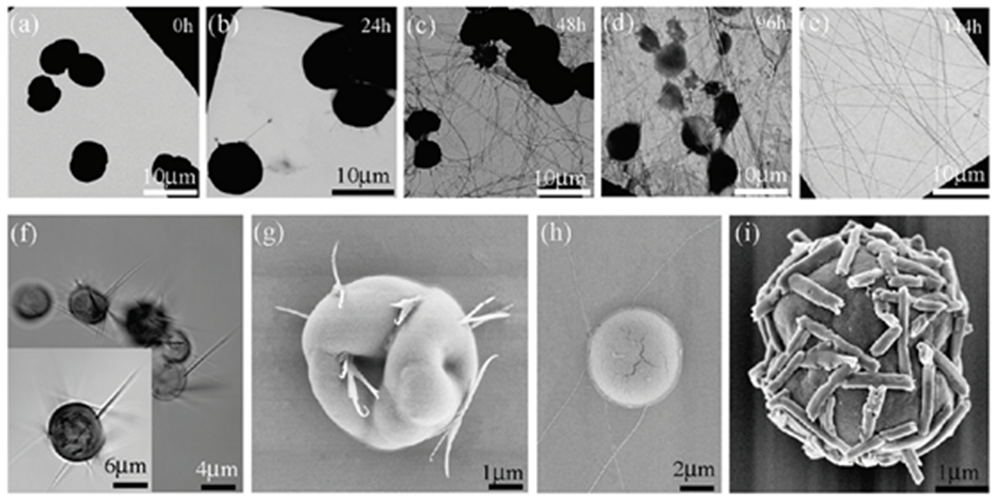News
| Nanotubes Protruding from Microcapsules: Phenomenon, mechanism and its applications |
| Time:2012-02-13 15:36 Source:未知 Author:polymer Click: |
Smart capsule systems are of high attraction due to their ability to respond to the alteration of environment conditions. But the morphology evolution of the microcapsules with the changes of the environment is very uncommon. Recently smart capsules which could reversibly respond to redox stimuli were fabricated in our group. In this process an interesting phenomenon of one-dimension nanostructures protruding from microcapsules were discovered and comprehensive studies have been performed to explore the mechanism and its applications. In preliminary studies, a strategy was applied to introduce ferrocene to the CaCO3 microparticles doped with poly(allylamine hydrochloride) (PAH) to fabricate microcapsules, which exhibit reversible responsibility to redox stimuli(Langmuir, 2011, 27(4): 1286-1291.). Through a similar strategy, pyrenecarboxaldehyde(Py-CHO) was reacted with the doped PAH to fabricate the PAH-Py microcapsules. Protrusion of one-dimensional nanotubes (1D-NT) or nanorods (1D-NR) from the PAH-Py microcapsules was discovered when the microcapsules were incubated in acidic solutions. And the protrusion process of the nanostructures was triggered by the environment conditions(ACS Nano, 2011, 5(5): 3930-3936.). Moreover, Attempt was then paid to control the 1D-NR growth state from the PAH-Py microcapsules by chemical cross-linking and surface modification(Journal of Materials Chemistry, 2012, 22: 2855-2858.), and the Py-CHO NR with multiple functions could be fabricated to obtain physical and chemical nanostructures(Chemistry of Materials, 2011, 23 (21): 4741-4747.). The above serious results are helpful for the development of a new class of methods to prepare multiple micro-nano structure capsules, which promotes the applications of capsules in the fields such as cell bionic technology, sensors, dynamic constitutional chemistry and so on.
TEM images showing the process of nanotube protruding fromthe PAH-Pymicrocapsules incubated in pH 0 HCl for 0, 24, 48, 96, and 144 h, respectively. (f) Optical images (inset, a higher magnification) showing the protruded nanotubes fromthe PAH-Pymicrocapsules incubated in pH 0 HCl for 30 h. SEM images of amicrocapsulewith nanotubes after treatment in pH 0 HCl for (g) 30 h and (h) 72 h, respectively. (i) SEMimage of amicrocapsule with nanorods after treatment in pH 2 HCl for 1 h. |

